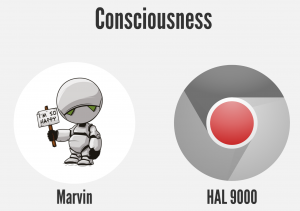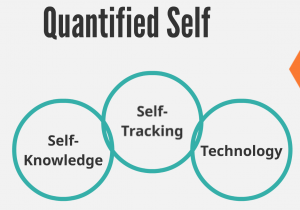Let us start with an example of the IoT Revolution in our daily life. Imagine you are going home after work. Your physical and mental parameters are the same
every day. Occasionally your pulse is high, you are running and being in a strange fighting mode. Possibly someone followed you. But what if you could have a smart wearable, which would measure all these parameters? It would find unusual patterns, trigger an alert to the police or notify the devices of other human beings around you.
During the past year, we realized that artificial intelligence is functionally necessary to bring the huge number of sensor devices online. And it definitely will be even more important in making sense of data streamed in from these devices to support the IoT Revolution.
Quantified self and the IoT Revolution
The term “quantified self” helps us to understand the birth of the combination of IoT Revolution and artificial intelligence.
In short, quantified self is a self-knowledge through self-tracking with technology. It bothers us all the time: Do we live a good life? How can we improve it? Where should we save time?
We collect data on many aspects of daily life. Analyze inputs, such as our food consumption or the quality of the air around us. Analyze different states of our mood. Worried about our performance, mental or physical.
But data is most valuable to us when it can trigger an action. It means that we should collect and analyze data immediately to maintain a continuous flow of information. Basically, it is one of our main processes, which leads the IoT revolution.
IoT needs artificial intelligence
Predictions for 2020 promise us many connected devices per person, terabytes of data per second to process, without including IoT-connected dogs and cats. At some point, the internet of things will become the biggest source of data on the planet. And the IoT revolution can let the machines point out where the opportunities truly are.
We can see how information technologies drive the transformation from old-style systems to highly intelligent applications and services. To identify previously known or new patterns immediately, it is necessary to provide real-time data collection. However, finding the ways to perform this with the data and information that all these devices create is still a big problem.
Artificial intelligence has reached the point now where it can provide invaluable assistance in speeding up tasks still performed by people. Once computers can fully simulate a human brain, it will cause an “intelligence explosion” that will radically change civilization. The rate of innovation will progress exponentially. Artificial intelligence will certainly go beyond self-driving cars and aircraft. How, exactly, will the world function once it has access to a global, interconnected computing environment? If it touches every device on the planet and has an ability to learn?
Artificial intelligence as part of the IoT revolution
IoT is producing a big haystack of data right now. Many organizations struggle to make sense of the enormous amounts of data. Every large corporation collects and maintains a huge amount of human-oriented data associated with its customers, including their preferences, purchases, habits and other personal information.

In conclusion, the internet of things is the data flowing between devices. To be able to find needles in this haystack, you need artificial intelligence. In some years, artificial intelligence will be an essential part of any IoT system and move the IoT revolution to a new level.

